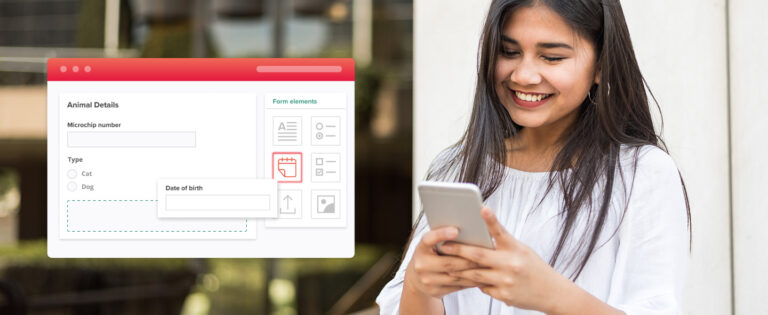
People aren’t just becoming more digitally savvy. They have integrated digital services into their daily routines, in many cases coming to rely on the conveniences that their phone or computer provides. Whether it be hailing a ride share, ordering groceries or household items, or paying their bills, online experiences are now considered critical to daily life.
For government, however, online self-service options still lag behind the growth of private sector services. Whether due to outdated tools or outdated thinking, government organizations at all levels find themselves interacting with a public that demands more digital experiences. The days of uploading a fillable form and expecting users to be satisfied are gone. The good news: With a shift in mindset, new digital tools provide the means for governments to rapidly adapt their online experiences to meet public expectations. And, in doing so, governments can achieve cost and time savings that positively impact their bottom line.
Digital services are no longer a new concept. While just a few years ago digital government may have seemed like a cutting-edge idea, shifts in public sentiment, spurred strongly by the COVID-19 pandemic impact on common governmental interactions, have made online services an expectation, not a luxury.
A 2021 study conducted by Granicus reflected how the change was impacting 1,500 government workers at the local, state, and federal levels. Among respondents:
Perhaps most notably, a significant portion (44%), stated that they believed slowing down technology implementation would mean risking the ability to meet resident expectations. Further, 96% percent of respondents said their organization would continue services or transactions that they digitized during the pandemic as part of agency long-term plans and roadmaps.
The will is there for governments to provide self-service digital options to their communities. But how does that vision become a reality?
When approaching online self-service, organizations should ask themselves how to create an experience that makes it easy for users to:
By measuring and improving a resident’s experience through visualizing their journey, identifying bottlenecks, and leveraging actionable insights, staff can refine the process and further increase self-service.
Design offers one significant way to make an impact in this area. Creating digital experiences that reflect modern, tested and proven, and continually evolving UX patterns ensures an easy-to-use experience. Optimizing content for mobile platforms and staying up to date on WCAG AA 2.1 accessibility will also help expand how users in all communities can easily interact with services.
Putting residents front and center when designing the backbone of digital self-service is critical and can be seen in such features as predictive search or common “top tasks” that help direct users to their desired outcomes with greater efficiency.
Regardless of how intuitive an experience designers may create for digital self-service, the vital part of the online process is the completion and submission of online forms. For many governments, fillable PDFs or online forms have become invaluable resources for this part of the process.
Processing and updating information associated with those forms, however, remains a time-consuming process for staff, often leading to reduced process transparency that can frustrate and disengage members of the public.
Tools such as OpenForms help modernize outdated processes with workflows that relieve staff time and automate steps of form processing. These workflows can also seamlessly and automatically route submissions to proper staff and departments while updating information that can significantly reduce time spent on call center and in-person interactions with the public.
Technology now allows any service to be transformed by rapidly converting even the most sophisticated PDFs, paper forms, and offline processes into online forms, without the need for coding. This presents another relief of staff time and resources that can both improve staff morale and save budget expenditures. Further, automated workflows provide easily retrievable information on process status to public search, increasing transparency and providing 24/7 self-service.
The positive results that come with the ability for a person to accomplish a task on their own is engrained in the human experience. So, it should be no surprise that members of the public are happier when they can complete their own tasks through digital self-service.
A recent McKinsey Public Sector Journey Benchmark Survey reflects this idea. Not only does the implementation of digital services benefit the user, but it benefits both budget and staff morale. According to the report, where satisfied customers are nine times more likely to trust the agency providing digital self-service, those that didn’t provide such service found users twice as likely to reach out for help three or more times.
Unsurprisingly, the report also found that organizations offering digital self-service saw boosted employee morale and long-term organizational success increase by 50% thanks to a combination of organizational health and positive customer experience.
There can be little doubt that the public now expects government services to be responsive to their needs with an experience that is online, seamless, accessible, and secure. Whether an organization is already undertaking an evolution to this digital reality or starting the process of confronting these needs, there is hope for organizations looking to improve their processes and provide more convenient services to residents.
Government efficiency and innovation expert, Brian Elms, will outline the best practices of end-to-end online service fulfillment in a webinar on June 7, 2022. While discussing the needs that governments face in meeting digital self-service needs, this conversation will uncover how government agencies are centralizing systems, lowering costs, and reducing headaches for their staff and residents. The event will also be available on-demand following the presentation.